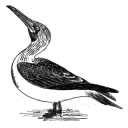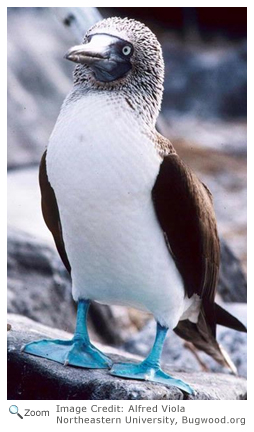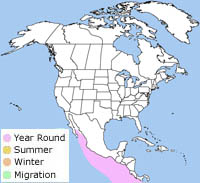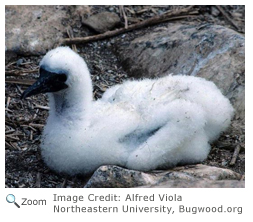Blue-footed Booby - Sula nebouxii |
|||||||||||
Description It has a long neck and a sharp bill. It has pointed brown wings. Its head and neck are covered with shaggy brown with and white feathers. Its chest and undersides are white. The blue-footed booby's most distinctive feature is its large webbed bright blue feet! Males use their bright blue feet to attract a mate! the bright blue a males feet are, the more likely he is to catch the eye of a female!
Range
HabitatThe blue-footed booby lives on the open sea, except when it is breeding. It breeds on ocean islands. | DietThe blue-footed booby plunges head first into the ocean with its wings partly folded to catch fish. It even catches flying fish when they are still in the air! It can also dive for fish while it is in a swimming position. Life Cycle Behavior |
||||||||||
Audio Credit: xeno-canto.org Andrew Spencer |
|||||||||||



 The blue-footed booby breeds from the Gulf of California south to Peru.
The blue-footed booby breeds from the Gulf of California south to Peru. 

